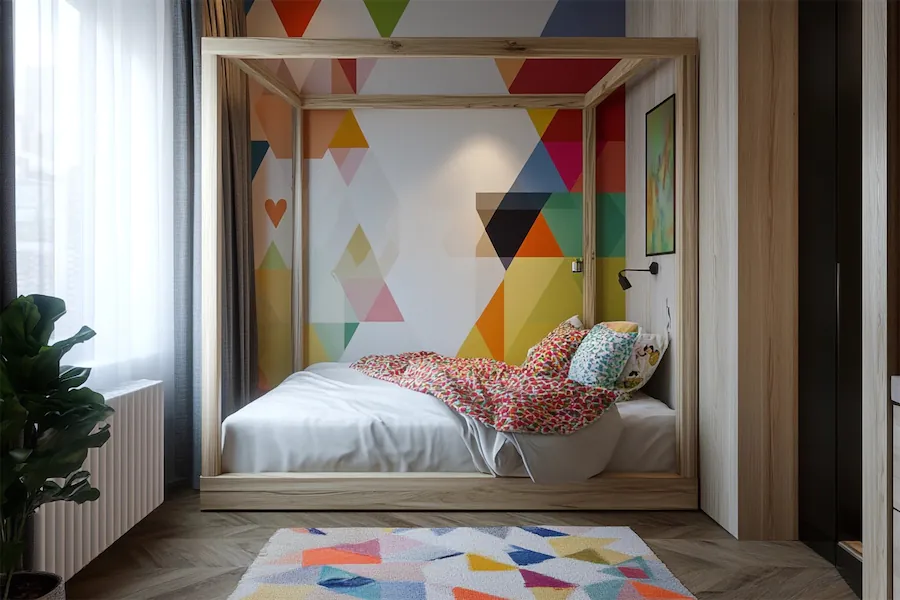A geometric-themed kid’s room utilizes shapes like triangles, circles, squares, and hexagons to add visual interest and energy to the space. This design approach not only appeals aesthetically but also serves as an educational tool, helping children recognize and learn different shapes.
History and Origins of Geometric Design
Geometric design has been a fundamental aspect of art and architecture for centuries, with roots in ancient civilizations that used shapes for symbolic and decorative purposes. In modern interior design, geometric patterns gained prominence during the Art Deco movement and have since evolved to suit various styles, including contemporary and minimalist aesthetics.
Key Features of Geometric Kid Rooms
- Geometric Wall Art: Incorporate painted shapes or decals to create accent walls that serve as focal points. For instance, using painter’s tape to outline triangles or other shapes, then filling them with contrasting colors, can add depth and interest to the room.
- Patterned Textiles: Select bedding, rugs, and curtains featuring geometric patterns to reinforce the theme. Chevron, hexagon, or diamond motifs can add a cohesive and vibrant touch to the decor.
- Geometric Furniture: Opt for furniture pieces with clean lines and angular shapes. Bookshelves, tables, or chairs that incorporate geometric designs contribute to a unified and modern look.
- Color Blocking: Use bold and contrasting colors in geometric patterns to create a lively atmosphere. Color blocking on walls or furniture can define different areas within the room and add a playful element.
Applications of Geometric Design in Kid Rooms
- Educational Decor: Incorporate wall art or toys that feature various shapes to aid in learning and recognition. This not only enhances the room’s aesthetic but also serves an educational purpose.
- Interactive Elements: Create chalkboard walls with geometric designs, allowing children to color or draw within the shapes, fostering creativity and interaction with the space.
- Themed Storage Solutions: Use storage boxes or shelves with geometric patterns to keep the room organized while maintaining the design theme.
Considerations When Designing a Geometric Kid Room
- Balance: While geometric patterns can be bold, it’s essential to balance them with neutral spaces to prevent the room from feeling overwhelming. Pairing vibrant patterns with solid colors can achieve harmony.
- Adaptability: Choose elements that can be easily updated as your child’s preferences change. Removable wall decals or interchangeable textiles allow for flexibility in redesigning the space.
- Safety: Ensure that all decorative items and furniture are child-safe, with no sharp edges or hazardous materials. Opt for non-toxic paints and finishes, especially when involving children in DIY projects.
Conclusion
Creating a geometric-themed kid’s room blends modern design with educational benefits, resulting in a space that is both engaging and functional. By thoughtfully integrating shapes, patterns, and colors, you can craft a room that inspires creativity and adapts to your child’s growing needs.
